Time to grow your practice into a viable business?
Posted by Cass Art Staff on 27th Dec 2021
Sophie Rochester is the CEO and founder of Yodomo, the marketplace for artists, designer-makers and craftspeople to share their creative skills and create additional revenue streams for their businesses. She is listed as a Top 10 British Council UK Creative Entrepreneur on the Guardian Professional Club 100 list, and is the author of the new book Making a Living: How to Craft Your Business. We asked Sophie for her advice for creatives tentatively dipping a toe into the world of business.
Over to you Sophie!...

SOPHIE ROCHESTER
Should you leave the day job for your art? First, get to the ‘why’ of what you want to do.
The holidays are a great time for reflection, and January is typically a month for making positive changes to our working lives. According to a survey by Glassdoor, ‘January is the month employees are most likely to think about changing jobs, with almost one in five (18%) citing this as the most popular month to make a move’. Perhaps it’s the long festive break that gives people the opportunity to reconsider their career paths, or the pandemic has also made many more people consider a reset in their lives.
Often in our busy lives we know what we’re doing and we know how we’re doing it but we often lose sight of the ‘why?’. On top of that sometimes even the best laid plans fall apart - especially during a pandemic.
During the pandemic many more people really engaged, or re-engaged, with the arts and creativity, and with that many more people are now looking to see how they might grow a creative practice into a viable business. Many artists and creatives already running businesses or earning money from their creativity have had revenue streams related to teaching and live events severely disrupted, so a new year brings with it new ideas for new approaches to making a living from your art.
Whether it’s a new business idea or contemplating a new revenue stream it always pays to stop, reflect and write some things down before setting off on a given pathway.
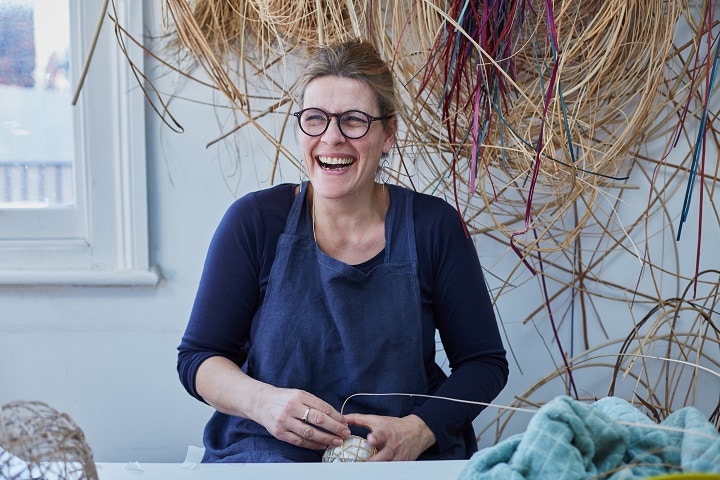
Personal motivations
Trying to get to the root of the ‘why’ of your plans will help you and your business over the long term, and help act as steer when having to make crucial decisions. The first ‘why’ to consider is your own personal motivations. This is a self-reflection exercise so one that you might want to do on your own and really get to the heart of what it is that really motivates you.
The calming benefits of engaging in the arts, making and crafting are well documented, and often people come to these creative activities because they are trying to get away from other stress points in their lives. One major consideration, especially if you’re at the beginning of your creative business journey, is that by turning your creativity into a business that you can often risk losing your love for it.
When you’re setting up you need to keep your eye on the end goal. If you’re organized and set up ways to either automate or outsource the other range of tasks related to your business, then there is no reason why you can’t continue to find time for making and growing the business.
One of the biggest challenges of starting a business is the financial implications, and if you’re in full-time employment, then making the jump from side-hustle to start-up business can be daunting.
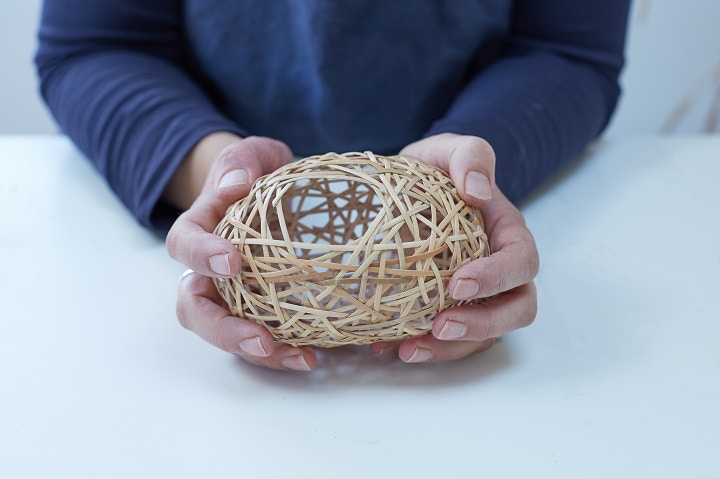
THE HOBBY
The word ‘hobby’ or ‘hobbyist’ brings with it sometimes negative connotations, but there is a lot to be said for keeping your passion for arts and crafts disconnected from the worries of creating a revenue stream from it.
The link between engaging in the arts and crafts with our wellbeing is well documented, and making with your hands has strong links to improved mood. One common perception is that by leaving your full-time job and turning your hobby into a business, you will suddenly have much more time for creating and making and a freer lifestyle. In this instance, it’s really important to keep in mind that running a full-time business will not necessarily mean more time for making or crafting, and that in order to run your business successfully much more of your time will need to be spent on content creation, digital marketing, business development, raising finance and more.
Keeping your full-time job and selling your art, or crafts or handmade items simply as a hobby might actually equate to exactly the same amount of time left for creativity, so it’s important to really understand the extent of that other work before you hand in your notice.
Exercise
- Ask yourself the difficult questions and get to the ‘why’ of you wanting to sell your work or skills commercially as opposed to just making and crafting as a hobby.
- Are you seeking validation for your work?
- Are there other ways to get your work validated other than turning your hobby into a business?
- Are you drawn to the lifestyle of being a maker or craftsperson?

THE SIDE-HUSTLE
Having a side-hustle at work used to be something that was kept a little bit under the radar from employers, but today many more companies are actively encouraging side-hustles and consider it an asset if employees can think entrepreneurially. This is evidenced in intrapreneurship programmes, with the most famous example being that in the early days Google would actively encourage employees to pursue their side projects ‘to inspire innovation in participating employees and ultimately increase company potential’.
Changes in the way that we work mean that running two, three or more different careers simultaneously is becoming more and more commonplace, and these portfolio careers create time and space to run businesses on the side and watch them grow, before having to give up other paid employment.
One major consideration for arts, crafts and making businesses is the cyclical nature of sales across the year. For many businesses, sales of finished goods, kits and learning workshops centre around Christmas, and many businesses find that 60–90 per cent sales come in the lead-up to and during Christmas. This might be where a portfolio career might really give you an advantage.
Exercise
Use these three questions to map out a typical week, month and year to try to understand how much time you have to commit to a side-hustle business.
- What are the implications of running two or more career paths simultaneously?
- Have you left any downtime in between your multiple professional roles to support personal wellbeing?
- Do your other roles sometimes seep into extra days – will you feel quickly overwhelmed or frustrated when you can’t find the hours to launch your side-hustle properly?

THE FULL PLUNGE
For some people, it is all or nothing. In order to get an idea off the ground, it is going to require a singular focus and no distractions. However, before you hand in your notice to your employer, ensure that you’ve made a plan of action, especially around your financial viability in that crucial period as you are building your business.
Understanding Your Motivations - A Case Study
Emma Mapp is a designer and a photographer who specializes in cyanotypes which she teaches through workshops and kits. She was a City of London lawyer before leaving her full-time job and returning to her love of photography and specialist photographic techniques. Here Emma gives her advice on what to consider before leaving the day job:
- Do your research. Who are your competitors? Is there room in the market for your business? What is your contingency plan if your business plan does not succeed? Talk to other business owners and ask for their advice.
- Get into the habit of recording your finances and think carefully about what you spend your money on. It’s vital to keep an accurate record of your profit and loss – money is the lifeblood of a business, and it’s important to have a comfortable relationship with it. You have to be able to make a living!
- Consider a collaboration or outsource. Two heads are better than one, and it’s impossible to be good at everything (IT, marketing, etc.). Think about collaborating with another person who complements your business but has different skills to bring to the party.
- Network a lot and get a mentor. I found seeing a careers coach was an invaluable experience, and it enabled me to have the courage to set up my business ventures.
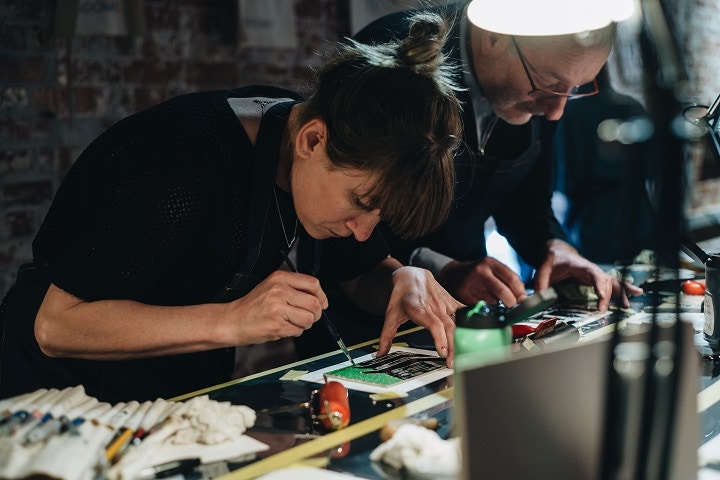
Purpose
The concept of ‘purpose’ in business is one that has been growing in importance in recent decades. Social enterprises and charities have long stated their mission, vision and values to their stakeholders, which then become an accountable set of standards to ensure that all activity serves those standards. This sense of accountability has seeped into the broader for-profit business world today with the growth of new business classifications, such as ‘B-Corp’, that encourage companies to be clear on their mission or purpose, and to ensure that business growth is not just serving its shareholders but also the planet.
In a 2009 TED Talk called ‘How Great Leaders Inspire Action’ author Simon Sinek introduced his Golden Circle theory, to help business leaders communicate the ‘why’ of what they do.
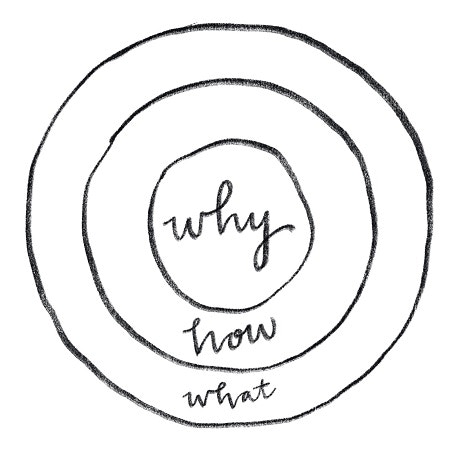
The Golden Circle (courtesy of Simon Sinek, www.simonsinek.com)
The Golden Circle exercise is a great way for creative entrepreneurs to get to the ‘why’ of what they do.
Exercise
- Define the ‘What?’ – What are the creative products or services that you intend to sell?
- Define the ‘How?’ – How will you sell your creative/artistic products or services, and how will you set yourself apart from your competitors?
- Define the ‘Why?’ – This is the most important part of your business, and sometimes gets overlooked – why are you doing what you do?
You can also do your own research on the businesses that you admire and check out their mission statements. As a new creative business, it might feel a bit strange to be looking at these big brand mission statements and writing your own. Getting to the ‘why’ of what you are doing, however, is an important exercise for any business at any stage of its growth, and will help you in making major decisions along the way. By having a clear idea of your purpose or mission, however, you will be better equipped to articulate your passion to your customers and all other stakeholders in your business. It will also help you think about what kind of a business you want to build.
As an important note, you may want to keep revisiting your mission statement as your business develops, and changes in personal circumstances may mean that your personal motivations evolve. It is unlikely that you’ll easily get to a mission statement in a day, but by getting something down on paper initially, and revisiting this as you build and hone your business, you should start to see your true mission emerging, and this will help you anchor everything else you do as you grow.
Exercise
- Consider your own personal motivations and financial situation, before deciding what kind of creative business you want to get off the ground
- Get to the ‘why’ of what you want your business to do and find your purpose.
- Write a clear purpose or mission statement to ensure that you have a ‘true north’ pathway to guide you to success.
Once you have considered the ‘why’ and purpose of your new creative business, you will be ready to start thinking about the next steps to solidifying your offer and launching your business.
Thanks Sophie!
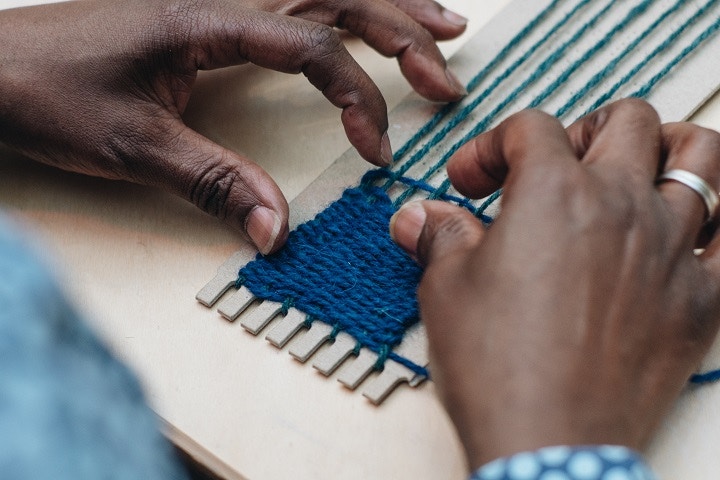
Feeling inspired?
This is an adapted extract from the book Making a Living: How to Craft Your Business by Sophie Rochester, Published by John Murray RRP £14.99.
If you’re looking to do some reflection on your working year in 2021 and do some gentle goal setting for 2022 then join other creative business owners on Friday 7th January at 3pm to share experiences and re-group for some camaraderie for the year ahead.
This is a *free* online zoom event for those in The Making a Living Programme™️ designed to support the growth of creative businesses (also free to join) - link in bio. Once you’ve joined search ‘Events’ and RSVP.
We’ll be chatting to Sophie throughout the year for more advice for creatives, keep an eye out for more articles on the Cass Art blog.
Image credits: Top image - Sophie Rochester photographed by Fran Hales. All other images courtesy of YODOMO.



